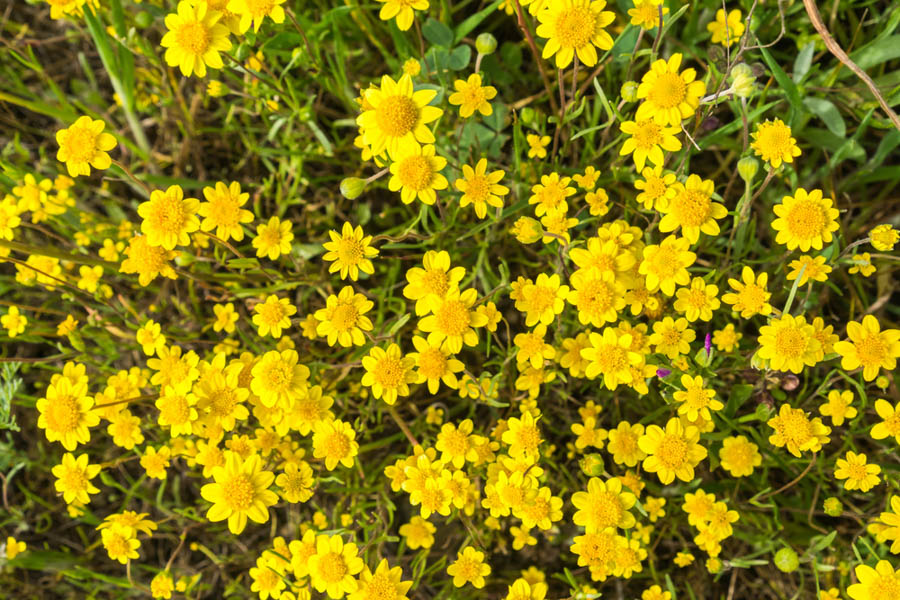California Goldfields: Plant in Fall for Burst of Golden Spring Color

California goldfields Lasthenia californica ssp. californica is native to wide portions of California. Plant California goldfields in the fall for a spectacular early spring bloom.
Soil. California goldfields are not particular about soil are adaptable to wide range of soil types, including clay, sandy, gravel, and loam and grow in a wide range of soil pH, from 6.0 to 9.0.
Microclimate. California goldfields need full sun.
Timing. Broadcast seeds of California goldfields outdoors in late fall for a burst of gold color as early as February, but usually between March to May, depending on the area. The onset of hot weather ends the blooming period and begins seed production.
How to plant. Select an area free of weeds and rake and loosen the upper layer of soil. Moisten the soil with a gentle layer of water. To ensure an even spread, mix sandy soil in your hand and broadcast the material with a sweeping motion over the area. Then toss a very light layer of soil over the broadcast seeds. Water the entire area for a few minutes with a gentle mist of water.
Watering. Water newly planted seeds daily with a gentle mist of water until seedlings begin to emerge and establish, unless fall rains keep the soil wet. Once established, California goldfields are very drought tolerant and can thrive in areas with a wide range of natural rainfall.
Pollination. California goldfields require cross-pollination. Planting California goldfields in large quantities helps to ensure cross-pollination.
California goldfields are suburb at attracting beneficial insects and pollinators such as native bees, honey bees, butterflies, beetles, and flower flies.
Don’t know your Garden Zeus zone? Click here.
Other articles of interest:
Chlorine, Soil, and Watering Gardens (Chlorinated Water, Part 1 of 2)
Remove Chlorine When Watering Organic Gardens (Chlorinated Water, Part 2 of 2)